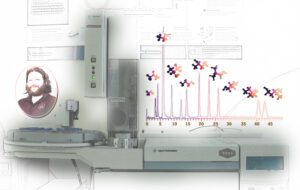
When it comes to alcohol profile, Brewing and Distilling Analytical Services (BDAS) can answer all your questions regarding alcohol content. The variety of different alcoholic products on the market is boundless and growing through flavor innovation. What started with flavors from barrel aging spirits has matured into a wide range of blended spirit-based beverages. Alcoholic beverages contain a complex mix of compounds, uniquely characteristic of each beverage, that create the individual aroma and flavor profile. Many compounds contribute to the aromas and flavors experienced by the consumer. Volatile compounds interact with receptors in the nasal passages, creating the aroma sensation. However, flavor is experienced as a combination of aroma and taste. While most added compounds enhance the desired aroma and flavor aspects of a beverage, trace components can contribute off-flavors and odors.
Brewing and Distilling Analytical Services (BDAS) knows that all alcoholic beverages should measure and report accurate alcohol content. Achieving high accuracy throughout the blending process ensures that your alcohol will meet government regulations. The volatile component profiles of alcoholic beverage products consist of a wide range of compounds, including acids, alcohols, aldehydes, and other trace level flavor compounds. BDAS analysts are trained in the sensory evaluation of distilled liquors, wines, and beers. The unique sensory properties of different types of distilled liquor products often are due to minor differences among the volatile components present. BDAS analysts qualitatively and quantitatively evaluate these differences to obtain a wealth of information about their products. Gin, bourbon, whiskey, vodka, tequila, and liqueurs have all been evaluated by our experienced staff.
At Brewing and Distilling Analytical Services (BDAS), we know there are two numbers that indicate exactly how strong distilled spirits are: